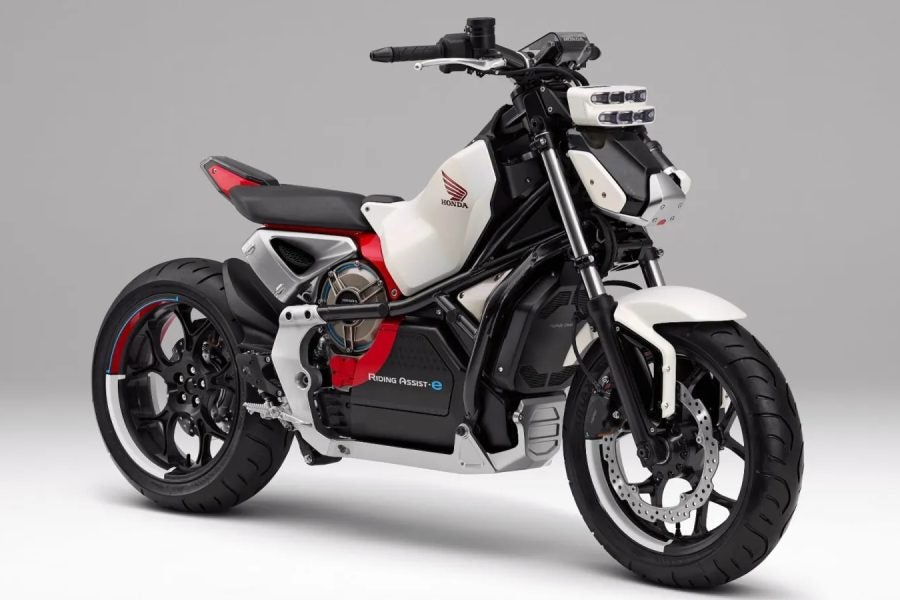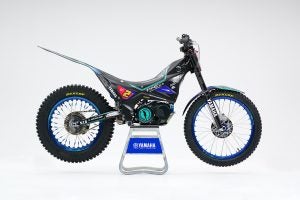Wondering where Honda’s electric motorcycles are? Honda has once again stated it’s working on battery bikes, with a massive $3.4 billion investment into EV motorcycles by 2030, with a plan to sell bikes that are price-competitive with their internal combustion counterparts.
The story over the last year
Some of you might already be thinking that we’ve heard all this before, and more than a year later, we’ve seen no real results. Remember Honda’s big conference back in September of 2022, detailing its upcoming alt-energy plans? Remember being told we’d see new EV motorcycles soon, which would be roughly equivalent to internal combustion bikes? What’s happened since then?
We can point to a few signs of progress last year. First, Honda did indeed show off an EV bike at the Rose Bowl parade in early January, showing the project isn’t just a figment of someone’s imagination. See it atop the Honda float in the opening segment below (mute sound, if the idea of listening to Fitz and the Tantrums gives you the willies).
We also saw the launch of the EM-1 electric scooter in the European market, with quick-swap batteries allowing for sensible day-to-day commuting use. Then there’s the electric CR motocross prototype that Honda debuted back in the All Japan Motocross Championship in late October.
All significant moves, but not the production-ready electric motorcycle we might have expected this year.
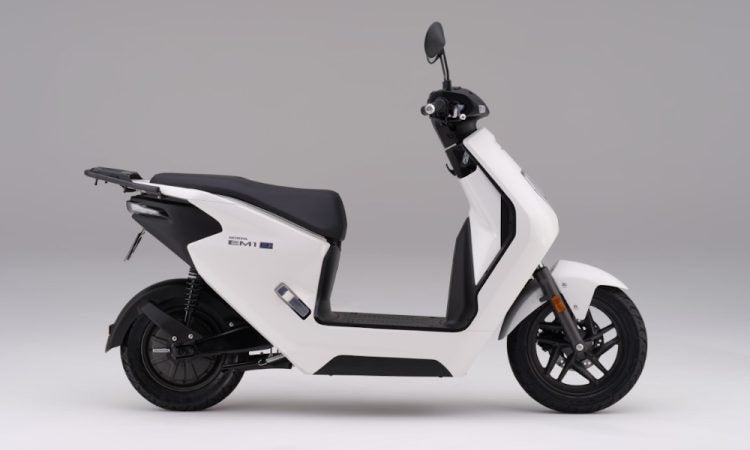
The 2023 Honda EM1e electric scooter, with quick-swap batteries. Photo: Honda
More waiting, and big plans ahead
So, when is that electric motorcycle coming, then? Honda had a briefing call on its EV plans today, and here’s what we ended up with:
Honda will introduce a new model globally in 2024, based on the SC e: Concept, recently exhibited at the JAPAN MOBILITY SHOW 2023, which will be followed by the global introductions of “FUN-oriented” models and plug-in electric models in 2025. In addition, Honda will introduce electric models in various categories such as super sports, naked, offroad, kids’ bikes and ATVs, accelerating its initiatives to build a full lineup of electric models by taking a proactive approach to introduce a total of more than 30 electric models by 2030.
If we see that plan work out, we’ll see a new EV concept machine in 2024, then, with production models coming in 2025. And even if we didn’t see a production bike or even any real release of an electric concept of a 2024 production model this year, we got a double-down promise from Honda today. In 2023, Honda said it wanted to get to 3.5 million electric motorcycle sales annually by 2030. Now, Honda says it wants to grow even further, to 4 million electric bike sales yearly by 2030.

Honda debuted its CR Electric Proto at a motocross race in Japan this fall. It is a sure sign of things to come. Photo: Honda
A big part of that plan—and probably the reason we see no Honda electric motorcycles on the North American market right now—is a move towards solid state batteries. Honda says it is currently working on lithium ferro-phosphate (LFP) batteries along with standard lithium-ion designs, and the first bikes we see will likely be powered by those technologies. However, it seems that solid state battery tech is the goal.
Big Red goes Big Tech
Part of the plan for the new EVs is to pack a lot of new technology into the machines, stuff we don’t see on existing models. Consider the following paragraphs, straight from Honda:
Connectivity is one of the features that will be significantly advanced with electric motorcycles. Advanced connectivity will enable post-purchase software updates, including the addition of new functions, through OTA (over-the-air) or other formats.
Honda will further advance the Honda RoadSync connectivity service, offered since 2020, and equip new models to be launched in 2024 with an IVI (in-vehicle infotainment) system that includes a suggestion-based navigation function, which will utilize collected information and provide the customers with information such as the location of charging stations.
For new models to be launched in 2026, Honda will install a telematics control unit (TCU) and further advance its connectivity service. In the future, data obtained and accumulated from both ICE and electric models will be utilized to understand the needs of customers based on the data of how those motorcycle models are being used. This will enable Honda to offer customer experiences that only Honda can offer, including functions to enable the customer to make new discoveries and achieve enhanced safety.
In the future, your Honda electric motorcycle will be upgraded with software updates added after the purchase. Honda’s bikes will come with built-in navigation systems which will help you find chargers. And at least some of Honda’s electric motorcycles will come with a so-called “black box” that records your riding habits. Honda says this is so it can help the rider “make new discoveries” and enhance safety, but some riders may have other thoughts.
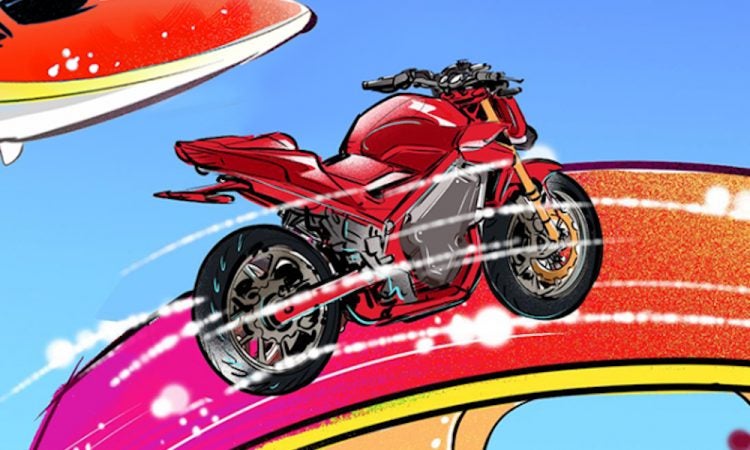
The electric motorcycle that later appeared on the Rose Bowl float. Image: Honda
Bye bye, dealerships
Don’t expect your local Honda dealer to shutter anytime soon, but Honda says a big part of the plan for these new models is a direct-to-consumer sales structure. This may not be possible thanks to North American law. Overseas, though, Honda says it will offer online sales and also Experience Centers—details on these are limited, but they sound like the motorcycle equivalent of a cellphone kiosk.
Spending money to make money
Part of the reason that EV tech has been slow to hit the motorcycle world is the cost of it all. OEMs need to make a profit, customers need to be able to afford the bikes. Honda says it plans to reduce the cost of electric motorcycles by 50 percent, when compared to current models with swappable batteries. To do that, it will use all the tricks available: build better batteries, improve procurement and production numbers, focus on modular platforms and build the bikes in EV-only facilities.
For now, Honda’s not building new factories, it’s repurposing ICE production lines. Beginning around 2027, though, Honda says it will begin construction of new electric motorcycle factories built for streamlined production. Each plant will represent a 50 billion yen investment, says Honda, which is currently roughly equivalent to $340 million USD. Each factory is supposed to have production capacity of a million units annually.
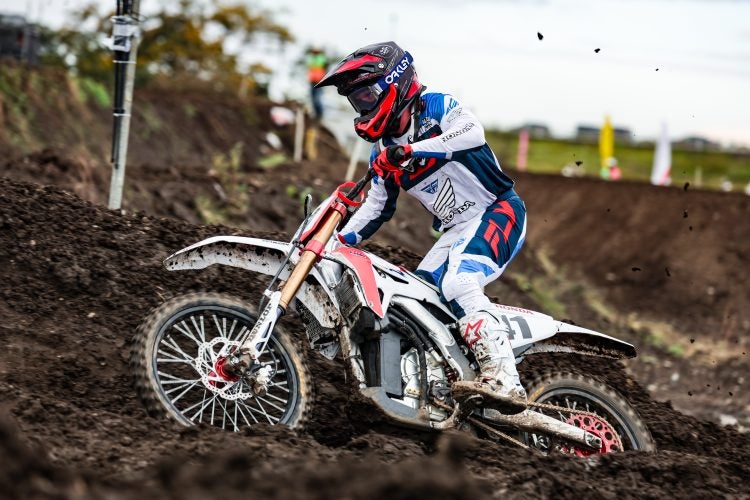
Watch the coming decade for massive investment by Honda into the EV motorcycle segment, as it tries to make the financial numbers sensible for everyone. Photo: Honda
That’s a huge investment, but it doesn’t stop there. Honda says it’s planning to invest a total of 100 billion yen (about $680 million USD) between 2021 and 2025, and then another 400 billion yen ($2.7 billion USD) between 2026 and 2030 in its electric motorcycle program. And the spending won’t stop there: “In 2031 and beyond, Honda will further enhance its competitiveness by investing in the establishment of a production system and capability on a global basis and further advance software technologies to maximize the sales of electric motorcycles.”
This is an incredible amount of money, but Honda has the goal of providing battery bikes at the same price as ICE and also having an operating profit margin of 5 percent on electric motorcycles by 2030 (they want a 10 percent margin on the moto business as a whole). From 2031 and beyond, Honda wants an operating margin over 10 percent on electric motorcycles. Presuming they hit their targets, their investment will all pay off.


